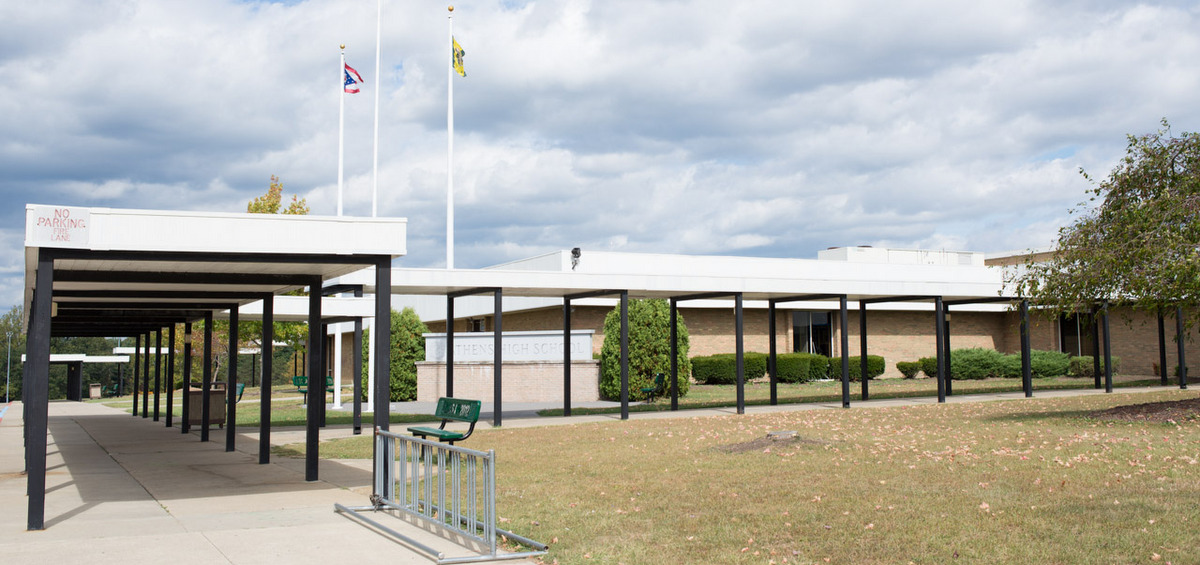News

Athens High School’s Future On the Table
By: Susan Tebben
Posted on:
After a two-hour presentation by a design firm, Athens Board of Education members were no closer to finding the solution for Athens High School.
The board met in a special meeting on Thursday night to discuss whether Athens High School should see a renovation or full rebuild with state funding the district has been offered from the Ohio School Facilities Commission.
Architect Dana Rettig, of OHM Advisors, presented options in transitioning AHS into a 21st Century learning facility that focuses more on “workplace culture” in education.
“Traditional education is quite a bit behind the workplace,” Rettig told the board and Superintendent Tom Gibbs.
He showed examples of businesses complexes and schools around Ohio which have rooms to promote focus, collaboration, presentation, creation, listening and innovation. He emphasized the use of glass both in separating rooms and allowing natural daylight in, something some Athens High School classrooms lack he said.
The bottom line for the district, though, is meeting state standards in their facilities, according to Rettig.
“Even the new (facility work) that was last added is nearing the end of its life,” he said.
While he presented options for a renovation as well, Rettig advocated for a new build when asked, saying deferred maintenance issues the district has now would no longer be an issue.
“The dollar you put in is what you’re going to get out of it,” he said.
Renovation of the high school would cost an estimated $38 million, whereas new construction would cost an estimated $44.4 million, according to numbers provided by OHM at the meeting. This includes both the 32 percent state share and the 68 percent local share that would come from a bond issue.
Rettig said in both cases, construction could impact two school years, and would begin in 2020.
Board members weren’t completely sure which way to go after the presentation. Members asked for the specific state of the current high school and examples of similar schools that had decided to renovate or rebuild a school.
“I really don’t know what we’re getting,” Board member Christian Gerig said. “I have a hard time sending this to voters without knowing what we’re getting.”
One thing that won’t be paid for by state monies is an auditorium. Gibbs and Rettig both said facilities money from the state can’t be set aside specifically for an auditorium because of the cost variables in building an auditorium. A designated auditorium would have to come out of the local share of the funding. Neither of the estimates laid out by OHM included that cost, but Rettig said a conservative estimate for an average auditorium would be about $300 per square foot.
The board did discuss combining the auditorium with the cafeteria for a multi-functional “cafetorium.”
During public comment, one community member questioned the motives of the facilities plan, arguing that the district had found lower test scores at The Plains and decided new schools were the fix. Others questioned whether special education was a focus in the discussions and another pushed for the district to hold off on new facilities until other issues in education could be addressed.
Board President Kim Goldsberry took time to speak to the group after public comment.
“This has never been about one building’s test scores or even about a test score ever,” Goldsberry said.
She also spoke about the unfortunate reality that some students come to school “dirty and they need showers,” the needed laundry facilities and school kitchens that can not be utilized to the fullest.
“We do have a facility problem, we have buildings that have green stuff coming through the classrooms, we have buildings that we have to put trash cans out if it’s a state testing day and it’s raining,” Goldsberry said. “We’re having to cover up computers…so there are things that we have to do for our students.”
She said it was difficult for the district to put off the fixes to facilities when a 32 percent state match is up for grabs, and the board can’t make the decision without community engagement.
“If we don’t take advantage of looking at what is best now, then we’re going to be another 50 years of doing the exact same thing we’ve always done, and I don’t know if that’s what’s right,” Goldsberry said.
Correction: The architect making the presentation was misidentified in a previous version of this story.

